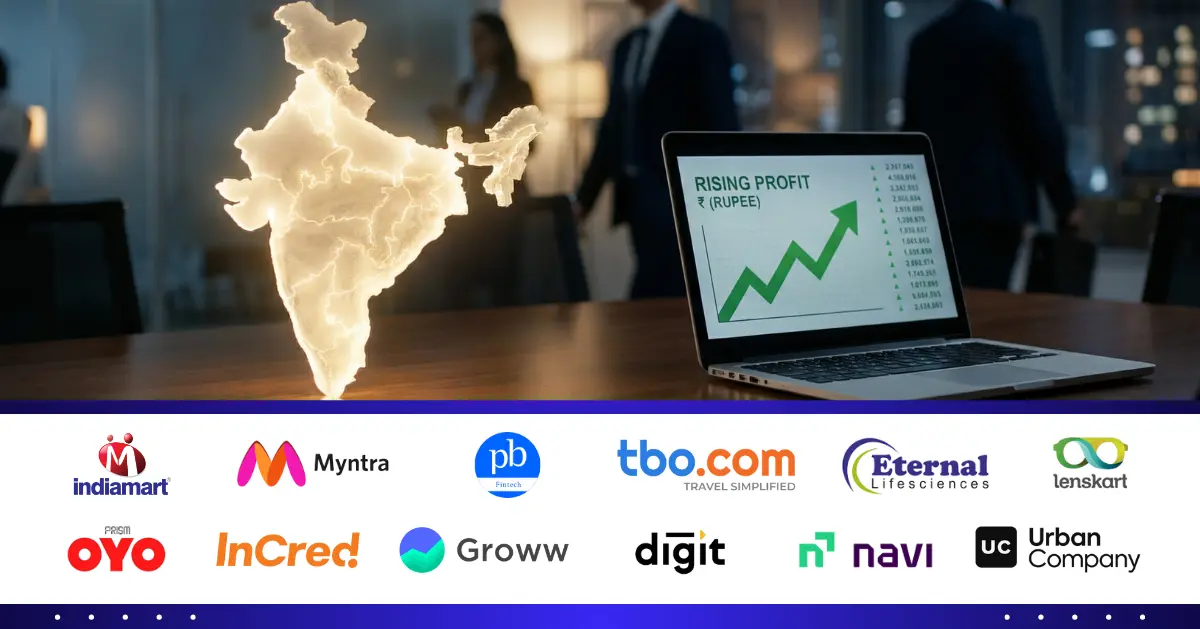
Introduction
Imagine launching a startup with a game-changing product yet struggling to gain the visibility it deserves. While digital marketing dominates the modern landscape, offline marketing remains an untapped gold mine that can help businesses stand out in a crowded marketplace. In fact, studies reveal that 60% of brand awareness for local businesses comes from offline marketing efforts—proving that traditional marketing techniques are far from obsolete.
Take Airbnb, for instance. Before becoming the global hospitality powerhouse it is today, the company relied on flyers, guerrilla marketing tactics, and direct mail campaigns to target travelers and homeowners. These offline strategies helped them gain traction in their early days when digital advertising alone wasn’t enough. Similarly, Red Bull revolutionized its market presence by sponsoring extreme sports events, hosting adrenaline-pumping competitions, and leveraging word-of-mouth marketing to build an energetic brand image. These companies didn’t just rely on online ads—they strategically blended offline marketing with digital efforts to create massive brand recognition.
For startups, offline marketing offers a cost-effective way to build trust, increase brand awareness, and drive customer engagement in a way that digital channels often struggle to achieve. Face-to-face interactions, print advertising, event sponsorships, and unique guerrilla marketing stunts allow businesses to connect with potential customers on a personal level, fostering deeper brand loyalty. Additionally, the integration of offline and online strategies—such as using QR codes on flyers or promoting physical events through social media—can amplify results and provide startups with a competitive edge.
In this guide, we’ll explore proven offline marketing strategies that startups can leverage to boost brand awareness, increase customer engagement, and achieve exponential business growth. From networking events and direct mail campaigns to outdoor advertising and experiential marketing, we’ll provide real-world examples and actionable insights to help you create a robust offline marketing strategy that complements your digital efforts. Whether you’re a bootstrapped entrepreneur or a fast-growing startup, this guide will show you how to make the most of offline channels for maximum impact.
Also Read: Marketing Firm
What is Offline Marketing?
It refers to traditional promotional methods that do not involve the internet. It includes print ads, direct mail, radio spots, television commercials, event sponsorships, networking, and more. Despite the dominance of digital marketing, 79% of consumers make purchasing decisions based on offline marketing tactics.
What Is The Importance of Offline Marketing for Startup Growth?
While digital marketing has taken center stage, marketing offline remains a powerful tool for startups looking to build credibility and trust. By leveraging traditional advertising methods like billboards, print ads, and networking events, startups can reach local audiences effectively and create a lasting brand impression. Here’s why marketing offline is essential for startup growth:
- Increases Brand Awareness – Billboards, flyers, and print ads expose your brand to a wider audience.
- Builds Trust – Face-to-face interactions create stronger relationships with potential customers.
- Reaches Untapped Audiences – Not everyone is online; marketing offline targets local communities effectively.
- Enhances Credibility – According to a Clutch survey, 67% of consumers trust print ads more than digital ads.
- Drives Higher ROI – Local events and direct mail campaigns generate higher engagement and conversions.
Offline marketing plays a crucial role in startup growth by fostering brand awareness and business promotion. Unlike online strategies, marketing offline enables direct engagement, making it easier to establish customer relationships. Studies show that offline advertising channels such as billboards and print ads can increase a startup’s brand recall rate by 70%. Additionally, face-to-face interactions at networking events contribute significantly to business growth, as 85% of professionals believe in-person meetings build stronger relationships.
What Are The Types of Offline Marketing Strategies?
Marketing offline encompasses a variety of strategies that help businesses connect with customers in the real world. Whether through print media, events, or direct sales, these methods offer startups a unique way to engage their audience. Below are some of the most effective offline marketing strategies:
1. Print Advertising
- Newspaper & magazine ads (Forbes, Business Today, Economic Times)
- Brochures, flyers, business cards
- Direct mail campaigns (Postcards, promotional letters)
2. Event Marketing & Sponsorships
- Trade shows and industry expos
- Community sponsorships
- Product launch events and networking conferences
3. Guerrilla Marketing
- Flash mobs and creative street art
- Publicity stunts and interactive campaigns
- Free sampling and demo booths
4. Television & Radio Advertising
- Local TV commercials and interviews
- Radio sponsorships and talk show mentions
- Podcast guest appearances
5. Word-of-Mouth & Referral Programs
- Customer incentive programs
- Partnering with local influencers
- Networking and business alliances
6. Outdoor Advertising
- Billboards and transit ads
- Posters and banners in high-traffic areas
- Murals and vehicle branding
7. Direct Sales & Networking
- Cold calling and door-to-door marketing
- Participation in business networking events
- Collaborations with local businesses
How to Create an Effective Offline Marketing Plan?
A well-planned strategy can significantly boost a startup’s visibility and customer trust. To maximize their impact, businesses need to define their target audience, set clear objectives, and allocate resources efficiently. Here’s how to create a winning marketing plan:
- Define Target Audience – Identify customer demographics and interests.
- Set Clear Objectives – Aim for brand awareness, lead generation, or direct sales.
- Choose the Right Channels – Focus on cost-effective and high-impact strategies.
- Budget Allocation – Prioritize ROI-driven offline tactics.
- Execute and Optimize – Track results, make adjustments, and refine strategies.
A successful marketing plan requires a balance between advertising, business promotion, and brand awareness. For instance, print advertising like flyers, brochures, and direct mail campaigns should align with the startup’s overall growth strategy. Additionally, leveraging local events, networking opportunities, and radio advertising can amplify a startup’s visibility, making it easier to gain customer trust and recognition. A well-structured offline marketing plan ensures sustained business growth while complementing digital marketing efforts.
To drive startup growth, businesses must consider offline advertising strategies that increase brand awareness while enhancing customer trust. Research indicates that offline promotions such as TV ads and print media generate up to 35% higher recall rates compared to online ads. Startups can optimize advertising efforts by testing different business promotion techniques and tracking which offline methods deliver the best results for startup growth and expansion.
Offline vs. Online Marketing – Which Is Better for Startups?
| Aspect | Offline Marketing | Online Marketing |
| Cost | High (TV, print ads) | Low (SEO, social media) |
| Reach | Local & targeted | Global & scalable |
| Engagement | High (face-to-face) | Moderate (digital interactions) |
| Conversion | 30-50% (events, direct mail) | 2-10% (PPC, email marketing) |
| Trust Factor | High (physical presence) | Moderate (reviews, testimonials) |
While online marketing offers scalability, marketing offline builds stronger trust and engagement. The best approach is an integrated marketing strategy combining both.
Measuring the Success of Offline Marketing Campaigns
Tracking the effectiveness of marketing offline can be challenging but is crucial for optimizing efforts and maximizing ROI. Startups need to implement measurable strategies such as foot traffic analysis, unique coupon codes, and customer surveys to gauge the impact of their campaigns. Here are some key ways to measure success:
- Track Foot Traffic – Monitor store visits after an offline campaign launch.
- Use Unique Codes & Coupons – Assign specific codes for each offline channel.
- Analyze Sales Data – Compare revenue before and after the campaign.
- Conduct Customer Surveys – Ask customers how they discovered your brand.
- Track Calls & Inquiries – Use unique phone numbers for different offline campaigns.
For startup growth, ensuring that marketing efforts contribute directly to brand awareness and business promotion is crucial. Research shows that brands investing in integrated offline and online marketing strategies see a 45% higher customer engagement rate. Tracking offline campaigns with dedicated tracking codes, monitoring advertising performance, and linking promotional efforts to in-store purchases are vital steps for ensuring effective startup growth.
Challenges in Implementing Offline Marketing for Startups
While marketing offline offers numerous advantages, it comes with its own set of challenges. High costs, limited reach, and difficulties in tracking ROI can make it harder for startups to execute offline campaigns successfully. Here are some of the biggest hurdles startups face in marketing offline :
- High Costs – TV, print, and billboard ads can be expensive for startups.
- Difficulty in Tracking ROI – Unlike digital marketing, attribution is harder.
- Limited Reach – Local marketing has geographic restrictions.
- Time-Consuming – Networking and direct sales require manual effort.
Conclusion
In an increasingly digital world, offline marketing remains a vital strategy for startups aiming to accelerate growth and establish a strong market presence. While online channels provide extensive reach, strategies including offline channels—such as event sponsorships, print advertising, word-of-mouth referrals, and outdoor promotions—help create tangible brand recognition and foster deeper customer trust. Studies indicate that over 56% of small businesses continue to invest in marketing offline, underscoring its enduring relevance.
Effective business promotion through offline channels, participation in industry events, and targeted brand awareness campaigns in local markets significantly enhance customer engagement and brand recall. Unlike digital marketing, which can sometimes feel impersonal, offline strategies provide direct, real-world interactions that build meaningful connections with potential customers. By integrating offline channels for marketing with digital efforts, startups can create a holistic and impactful branding experience that maximizes market penetration and ensures sustainable growth.
Ready to get started? Reach out to trusted platforms like RegisterKaro and make your compliance journey hassle-free, allowing you to focus on what truly matters—growing your business. Contact our support team at [email protected] today!
Frequently Asked Questions (FAQs)
1. What are the most cost-effective marketing strategies for startups in an offline setup?
Networking, guerrilla marketing, and word-of-mouth referrals are low-cost yet effective strategies.
2. How can I track marketing performance for offline channels?
Use unique promo codes, track phone inquiries, and monitor foot traffic to measure results.
3. Is marketing your business offline still relevant in 2024?
Yes, according to Forbes, 79% of consumers make purchasing decisions influenced by offline channels of marketing.




